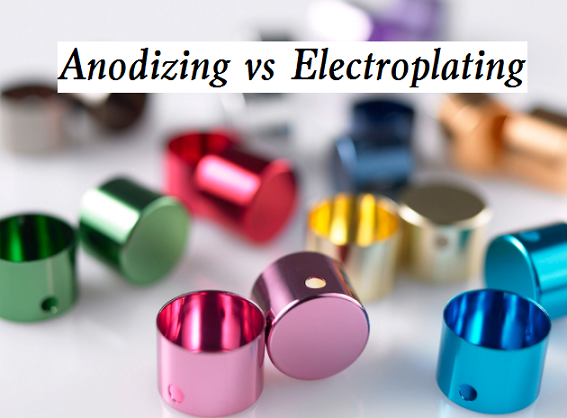With different surface finishing methods, what is the difference between aluminum anodizing and electroplating? Should you anodize aluminum and why?

Difference Between Anodizing and Electroplating - Anodizing vs Electroplating
1) In electroplating, the material to be plated serves as the cathode, the same metal material as the coating metal serves as the anode, and the electrolyte is a solution containing the coating metal ions. A certain current is applied between the anode and cathode, and a metal coating is produced on another metal surface. Anodizing is a chemical or electrochemical process that thickens the natural oxide coating on the metal surface. It is a type of material protection in which a metal anode creates a layer on its surface as a result of a current in a specified electrolyte.
2) Electroplating is mostly used to treat the surfaces of metals and nonmetals. Nickel, chromium, tin, copper, silver, and gold are the most often utilized electroplating metals. Anodizing is a metal surface treatment process. In an adequate electrolyte, most metals (including stainless steel, zinc alloy, aluminum alloy, magnesium alloy, copper alloy, and titanium alloy) can be anodized.
3) For electroplating, because of the charge effect, the metal anode ion goes to the cathode, where it collects electrons and deposits them on the substance to be plated. Simultaneously, the anode’s metal is dissolved, and the metal ions in the electrolyte are continuously replenished. Anodizing is the electrochemical regulation of the production of an oxide layer to prevent further oxidation of aluminum and to boost the mechanical properties of the surface by taking advantage of the easy oxidation features of aluminum alloy.
Why Aluminum Alloy Should Be Anodized
Aluminum alloy has many advantages, such as lightweight, corrosion resistance, good processing performance, high thermal conductivity, good conductivity, etc. However, aluminum alloy itself has many disadvantages:
1. The hardness of aluminum is relatively low, and the wear resistance is also relatively poor.
2. Aluminum shrinks greatly during solidification.
3. The expansion coefficient of aluminum is high.
4. The melting point of aluminum is relatively low, and the use temperature cannot exceed 200 ℃, so the use at high temperatures is limited.
5. The elastic modulus of aluminum is only 1/3 of that of steel.
6. The potential of aluminum is very negative, so when aluminum contacts dissimilar metals, it is easy to cause serious galvanic corrosion as an anode.
The aluminum anodizing is applied to overcome the above shortcomings of aluminum, mainly the defects of aluminum surface performance, so as to expand the application scope and service life of aluminum. Basically, it is to improve the protection, decoration, and functionality of aluminum alloy. The protection mainly refers to the prevention of aluminum corrosion and the protection of aluminum appearance. Decorative mainly starts from aesthetics to improve its appearance quality, such as improving metal luster and coloring. Functionality refers to increase surface hardness, wear resistance, electrical insulation, etc. The porous anodized film can also give the surface electromagnetic and photoelectric functions.

